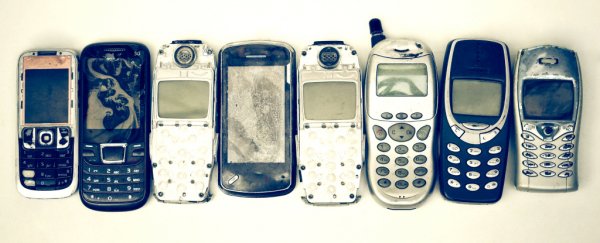If you're like most of us, you probably have a bottom drawer somewhere filled with old, cracked, or outdated mobile phones that you're planning to drop off to be recycled any day now, any day.
But a new study suggests that there's actually a way better alternative to recycling - using your old batteries to provide safer lighting for people in developing countries and remote areas instead.
On average, mobile phones today are replaced every two years, but the lithium-ion batteries inside them are still good for around five years of use. That means they end up being thrown out or recycled while they've still got a good three years' worth of juice left - more than enough to store power for LED solar lamps, as a researcher from Kyung Hee University in Seoul has discovered.
That's a big deal in remote regions and developing countries, where they currently have to rely on kerosene lamps for lighting, which pump out dangerous, toxic fumes, provide inconsistent light, and easily cause burns and start fires.
"Used mobile phone batteries associated with a solar panel and a light emitting diode lamp can be a good replacement for candles or kerosene lamps that generate pollution, are hazardous, and only give poor lighting," lead researcher Boucar Diouf writes in the Journal of Renewable and Sustainable Energy.
To test the idea out, Diouf hooked up a single lithium-ion battery from a mobile phone and used it to run a 1 Watt solar lamp for just over three hours. When he swapped the LED bulb for a 0.5 Watt one, which still provides enough light for reading and writing, the system lasted for six hours.
Diouf also took things one-step further and built a 12-volt system out of three batteries, a 5 Watt lamp, and a solar panel for less than US$25. That provided enough power to light a room five hours a day for three years, without needing any maintenance.
You can see the set-up below:
Once the battery dies, the solar panel should still be working fine, so the user can just swap it for a new one. That dead battery can then be sold "for a final recycling for rare metal recollection", Diouf writes. Win/win.
The solar lamps would also save a whole heap of carbon emissions that are currently pumped out by candles. Diouf estimates that if every family without a lamp swapped out five hours of candle use daily for a solar lamp system, it could save a grand total more than 36,000 tons (32,658 tonnes) of CO2 per day globally.
"When one mobile phone battery is recycled, about 130 g of CO2 will be kept away from the environment daily," writes Diouf. "When three batteries are assembled in a system, a full room will be illuminated allowing studying, safety, healthy lighting, or other income generating activities."
It's a great idea, but there are no shortage of those when it comes to environmental solutions. The hardest part is putting them into practice, and setting up infrastructure that will make it easy for people with too many old phones cluttering up their drawers to get them to people who need them to light up their homes.
Let's just hope there are other great thinkers like Diouf out there coming up with solutions to these practical problems, because we're running out of excuses when it comes to taking action against climate change and poverty.

